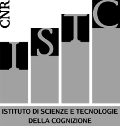The present study reports empirical longitudinal data on the early stages of language development. The main hypothesis is that the output systems of speech and gesture may draw on underlying brain mechanisms common to both language and motor functions. We analyze the spontaneous interaction with their parents of three typically-developing children (2 M, 1 F) videotaped monthly at home between 10 and 23 months of age. Data analyses focused on the production of actions, representational and deictic gestures and words, and gesture-word combinations. Results indicate that there is a continuity between the production of the first action schemes, the first gestures and the first words produced by children. The relationship between gestures and words changes over time. The onset of two-word speech was preceded by the emergence of gesture-word combinations. The results are discussed in order to integrate and support the evolutionary and neurophysiological views of language origins and development.
From Action to language through gesture: a longitudinal perspective
Tipo Pubblicazione:
Articolo
Publisher:
Benjamins, Amsterdam ;, Paesi Bassi
Source:
Gesture (Amsterdam. Print) 5 (2005): 155–177. doi:10.1075/gest.5.1.12cap
info:cnr-pdr/source/autori:Capirci, O.; Contaldo, A.; Caselli, M.C.; Volterra, V./titolo:From Action to language through gesture: a longitudinal perspective/doi:10.1075/gest.5.1.12cap/rivista:Gesture (Amsterdam. Print)/anno:2005/pagina_da:155/pagina_a:177
Date:
2005
Resource Identifier:
http://www.cnr.it/prodotto/i/169176
https://dx.doi.org/10.1075/gest.5.1.12cap
info:doi:10.1075/gest.5.1.12cap
http://www.ingentaconnect.com/content/jbp/gest/2005/00000005/F0020001/art00009
Language:
Eng




